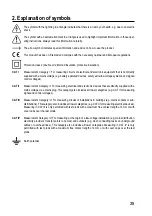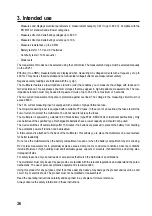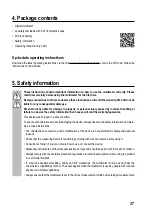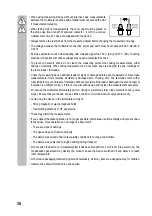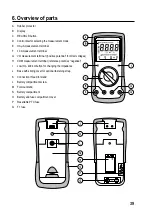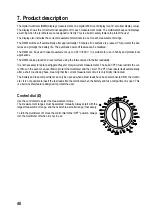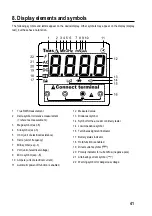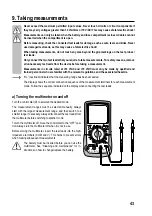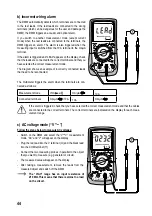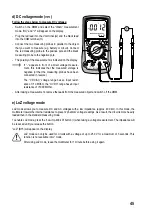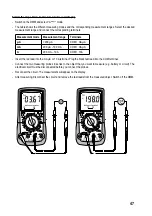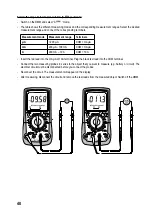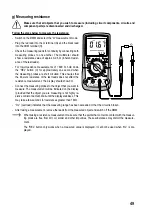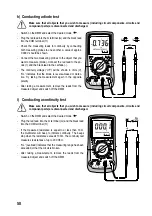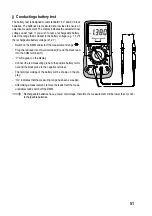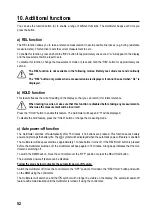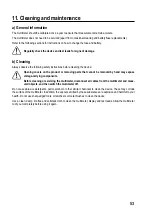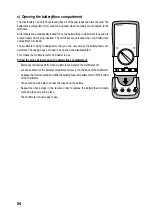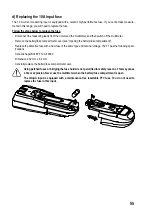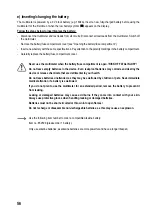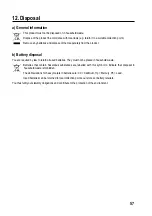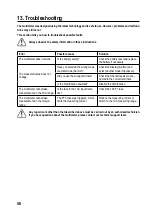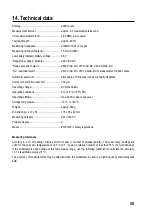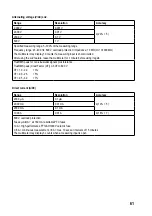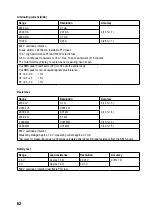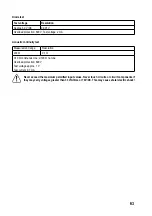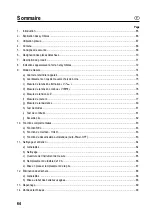
49
g) Measuring resistance
Make sure that all objects that you wish to measure (including circuit components, circuits and
component parts) are disconnected and discharged.
Follow the steps below to measure the resistance:
- Switch on the DMM and select the “Ω” measurement mode.
- Plug the red lead into the Ω terminal (G) and the black lead
into the COM terminal (H).
- Check the measuring leads for continuity by connecting both
measuring probes to one another. The multimeter should
show a resistance value of approx 0–0.5 Ω (inherent resist-
ance of the test leads).
- For low-impedance measurements of <600 Ω, hold down
the “REL” button (C) for approximately one second when
the measuring probes are short circuited. This ensures that
the inherent resistance of the test leads does not affect the
resistance measurement. The display should show 0 Ω.
- Connect the measuring probes to the object that you want to
measure. The measurement will be indicated on the display
(provided that the object you are measuring is not highly re-
sistive or disconnected). Wait until the display stabilises. This
may take a few seconds for resistances greater than 1 MΩ.
- “OL” (overload) indicates that the measuring range has been exceeded or that the circuit is broken.
- After taking a measurement, remove the leads from the measured object and switch off the DMM.
When taking a resistance measurement, make sure that the points that come into contact with the measur-
ing prods are free from dirt, oil, solder and other impurities. These substances may distort the measure-
ment.
The “REL” button only works when a measured value is displayed. It cannot be used when “OL” is dis-
played.

